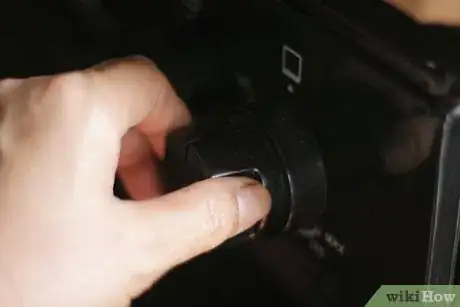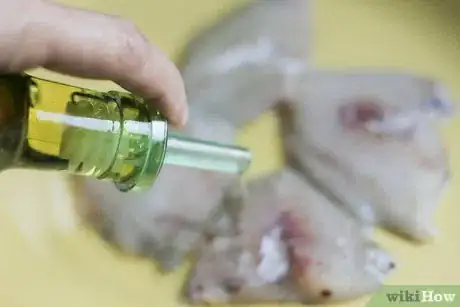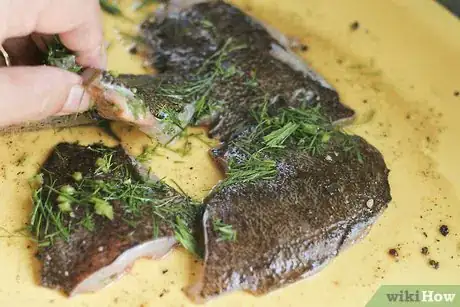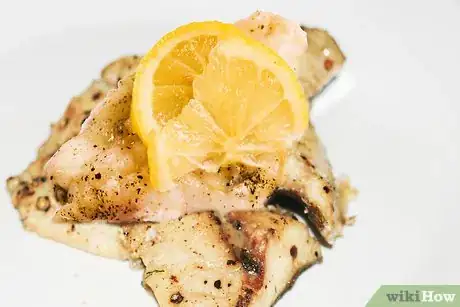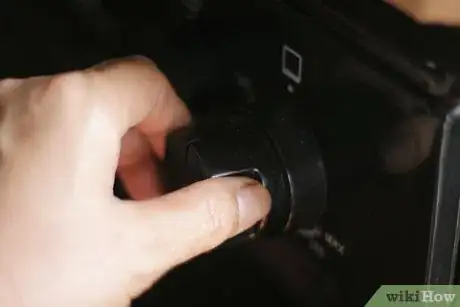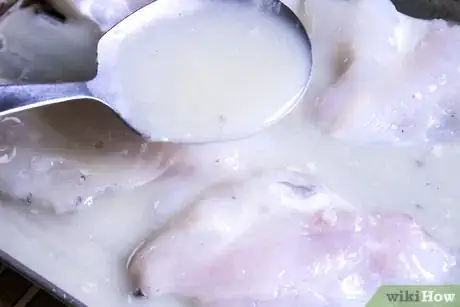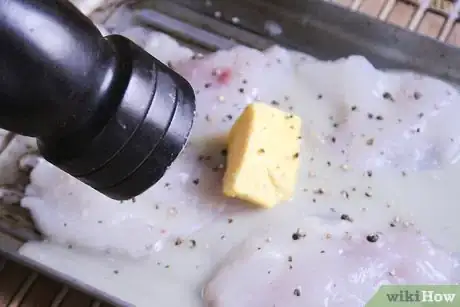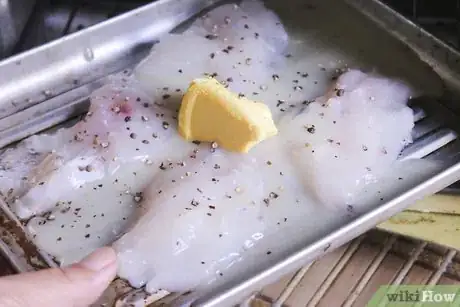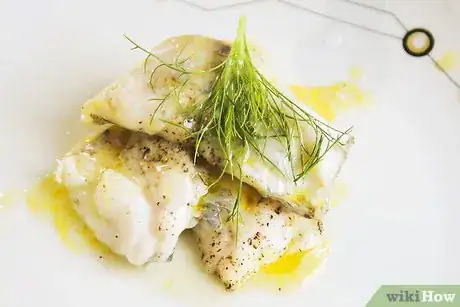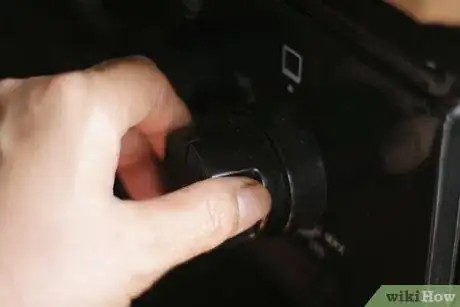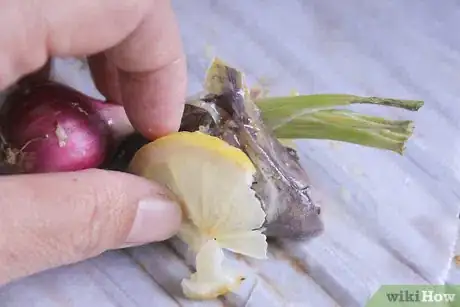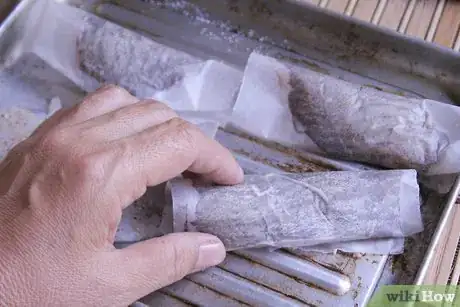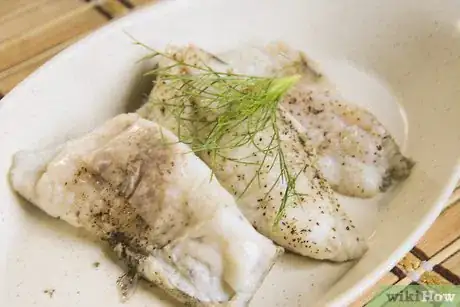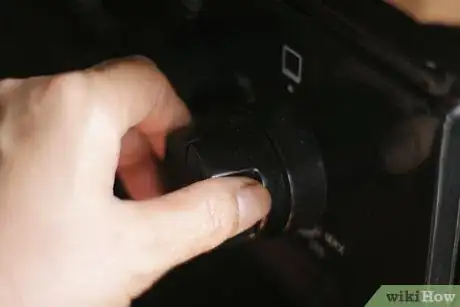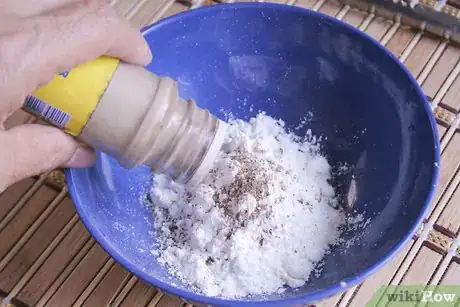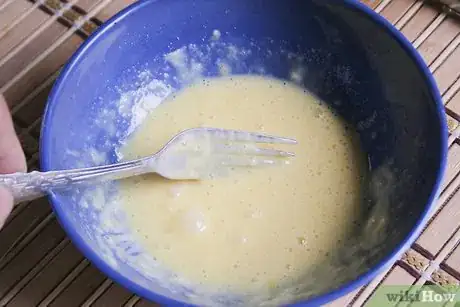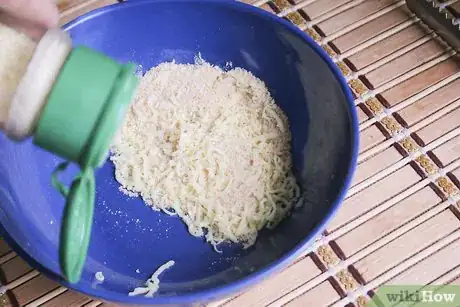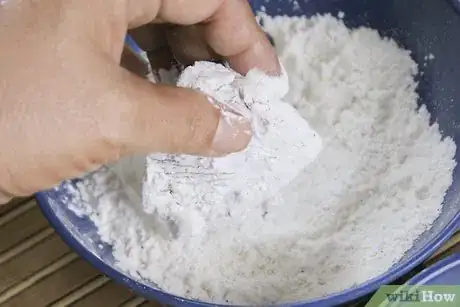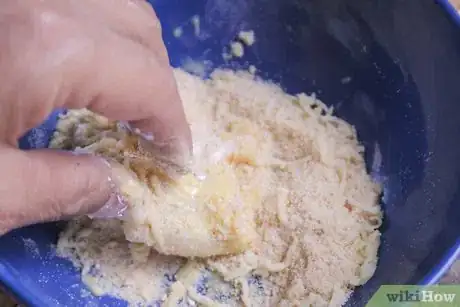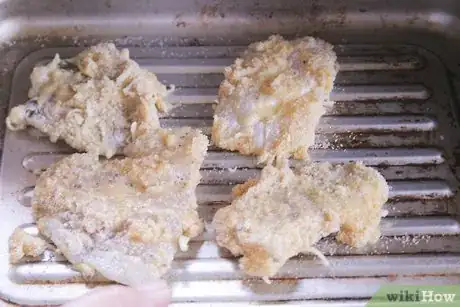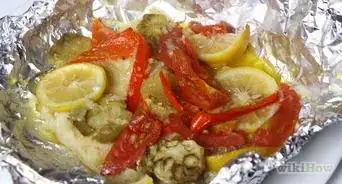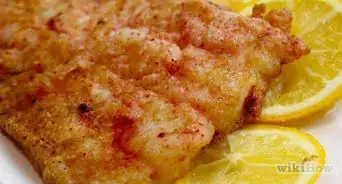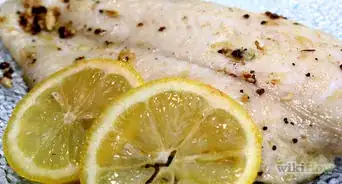wikiHow is a “wiki,” similar to Wikipedia, which means that many of our articles are co-written by multiple authors. To create this article, volunteer authors worked to edit and improve it over time.
This article has been viewed 47,137 times.
Learn more...
Halibut is a type of flaky whitefish with a mild flavor. It's also easy to prepare and fairly versatile, so you can bake this fish using a variety of ingredients and techniques. Simply pick the option that appeals to you best.
Ingredients
Makes 4 servings
- 4 halibut fillets, 5 to 6 oz (142 to 170 g) each
- 4 tsp (20 ml) olive oil OR melted butter
- 2 Tbsp (30 ml) lemon juice
- 1/4 tsp (1.25 ml) garlic powder
- 1/4 tsp (1.25 ml) ground black pepper
- 2 Tbsp (30 ml) chopped fresh parsley
Makes 4 servings
- 4 halibut fillets, 5 to 6 oz (142 to 170 g) each
- 10.5 oz (300 g) can cream of mushroom soup
- 4 tsp (20 ml) butter
- Ground black pepper, to taste
Makes 4 servings
- 4 halibut fillets, 5 to 6 oz (142 to 170 g) each
- 1/2 tsp (2.5 ml) kosher salt
- 1/4 tsp (1.25 ml) ground black pepper
- 1 small orange, sliced OR 2 lemons, sliced
- 12 thyme sprigs
- 1 small onion, sliced
Makes 4 servings
- 4 skinless halibut fillets, 5 to 6 oz (142 to 170 g) each
- 1/2 cup (125 ml) all-purpose flour
- 1/2 tsp (2.5 ml) salt
- 1/2 tsp (2.5 ml) ground black pepper
- 2 eggs
- 1/4 cup (60 ml) milk
- 1 cup (250 ml) dry bread crumbs
- 1/3 cup (80 ml) grated Parmesan cheese
- 1/2 tsp (2.5 ml) garlic powder
Steps
Basic Baked Halibut
-
1Preheat the oven to 400 degrees Fahrenheit (200 degrees Celsius).[1] Meanwhile, prepare an oven-safe casserole dish by lightly coating it with nonstick cooking spray.
- You could also line the dish with a sheet of parchment paper or nonstick aluminum foil.
-
2Drizzle the halibut with oil and lemon juice.[2] Arrange the halibut fillets in the prepared baking dish. Drizzle each fillet with approximately 1 tsp (5 ml) of olive oil or butter, followed by 1/2 tsp (7.5 ml) of lemon juice.
- If you're using halibut fillets with the skin still attached, arrange the fillets with the skin-side down. For skinless fillets, it doesn't matter which side faces up.
Advertisement -
3Season the fish. Evenly sprinkle each fillet with garlic powder, black pepper, and freshly chopped parsley.
- Use 2 Tbsp (30 ml) of chopped parsley if it's fresh. If it's dry, however, drop this amount to 2 tsp (10 ml).
-
4Bake for 12 to 15 minutes. Place the prepared halibut in the preheated oven and bake it for about 15 minutes, or until the flesh flakes easily when you pierce the center of the fish with a fork.
- Peek at the fish through the window of the oven door after 7 or 8 minutes pass. If the top looks dry and the oil/butter has pooled at the bottom of the baking dish, quickly spoon the fat over each fillet and continue baking.
- Note that you should not rotate or flip the fillets during the baking process.
-
5Serve. Remove the finished halibut from the oven and enjoy it immediately.
- Consider serving each serving of fish with lemon wedges or a fresh squeeze of lemon juice.
Simple Sauced Halibut
-
1Preheat the oven to 400 degrees Fahrenheit (200 degrees Celsius). Set aside a nonstick, oven-safe casserole dish or similar baking dish.
- You do not need to coat this baking dish with cooking spray, aluminum foil, or parchment paper.
-
2Cover the fish with the soup. Arrange the halibut fillets in a single layer inside the baking dish. Evenly spoon the cream of mushroom soup on each fillet, spreading it over the top of each one using the back of the spoon.
- If applicable, keep the skin-side of the fillet facing down inside the baking dish.
- While cream of mushroom soup works well, you can also experiment by using a different "cream of" soup. Other options worth considering include cream of chicken, cream of celery, cream of onion, and cream of potato.
- If you'd rather not use the soup, you can create a very thin sauce by pouring 3/4 cup (180 ml) of milk or chicken broth over the fish fillets.
-
3Add butter and pepper to each fillet. Place 1 tsp (5 ml) of butter in the center of each halibut fillet, then sprinkle each fillet with ground black pepper.
- Leave the butter solid instead of melting it for this method. It should melt and spread evenly throughout the flesh of the fish as it bakes.
-
4Bake for 15 minutes. Place the prepared fillets in the preheated oven. Bake the fish for about 15 minutes, or until it flakes evenly when you pierce the center with a fork.
- The sauce should keep the halibut moist while it cooks. You shouldn't need to baste, rotate, or flip the fish during the baking process.
-
5Serve. Remove the fish from the oven and immediately transfer it to individual serving dishes. If desired, spoon some of the sauce over each fillet before enjoying.
Parchment Baked Halibut
-
1Preheat the oven to 400 degrees Fahrenheit (200 degrees Celsius). Prepare four separate 15-inch (38-cm) squares of parchment paper.[3]
- You'll also need to grab a standard baking sheet, but you can set it aside temporarily. Do not place the parchment paper on the baking sheet yet.
-
2Center the fillets on the parchment paper. Place one halibut fillet on the center of one parchment paper square. Repeat this with the other fillets and other pieces of parchment.
- If you don't have enough space on your kitchen counter to spread out all four sheets of parchment, simply create one packet at a time, setting the remaining fillets and parchment aside until you're ready to use them.
- When using skin-on fillets, you'll need to arrange the skin-side of each one face-down so the exposed flesh faces up. The placement of the fillets won't matter when using skinless halibut, though.
-
3Season with salt and pepper. Evenly sprinkle each fillet with salt and pepper.
-
4Arrange the aromatics on top. Lay the slices of citrus fruit over each fillet, followed by the thyme sprigs and sliced onion. Spread these aromatics evenly over the top of the halibut.
- While lemon is the most conventional citrus pairing for fish, orange slices also work well for this recipe.
- Baked halibut recipes using aromatic ingredients typically do best when you use the parchment baking method. The packets of paper trap the fragrant aromas in the air directly surrounding the fish, concentrating their flavor as a result.
-
5Fold the parchment paper into packets. Fold up the sides of the each piece of parchment over the top of each fillet, sealing the edges.
- Begin by folding lengthwise over the fillets. Overlap the folds and crease well to hold them.
- Fold and roll each open end of the parchment, then tuck the ends beneath the packet to prevent them from coming undone.
- Place each packet onto the prepared baking sheet when finished.
-
6Bake for 15 minutes.[4] Place the halibut packets in the preheat oven and bake them until the center of the thickest fillet flakes easily when pierced with a fork.
- Since you'll have to undo the packet to test the fish, it's best to wait until you're relatively certain the fish is done. Only undo and test one packet. If it isn't done, fold the sides again and continue baking as need.
-
7Serve. Remove the finished halibut packets from the oven and enjoy them immediately.
- You can either undo the packets and serve the fish on individual serving platters or allow each person to cut open his or her own packet.
Breaded Baked Halibut
-
1Preheat the oven to 450 degrees Fahrenheit (230 degrees Celsius).[5] Prepare a 9-inch by 13-inch (23-cm by 33-cm) baking sheet by lightly coating it with nonstick cooking spray.
- For an easier cleanup, you could cover the baking sheet with nonstick aluminum foil or parchment paper instead of using cooking spray.
-
2Toss together the flour, salt, and pepper. Place the three ingredients in a medium mixing bowl and thoroughly toss them together using a fork or whisk.
- You don't need to sift the flour, but if you notice any lumps, break them up with the utensil while mixing the ingredients.
- The flour will make it easier for the outer coatings to adhere to the halibut. Adding the salt and pepper to the flour will allow them to flavor the flesh of the halibut more directly.
-
3Beat together the egg and milk. Combine the two ingredients together in a second medium bowl. Whisk them together until evenly combined.
- The egg and milk will help keep the halibut moist while also making it easier for the final coating to stick to the fish.
-
4Combine the breading ingredients. In another separate medium bowl, combine the bread crumbs, Parmesan cheese, and garlic powder, tossing them together until evenly combined.
- Arrange the three bowls side-by-side. The flour mixture should be first, the egg mixture should be second, and the bread crumb mixture should be third.
-
5Dredge the halibut in flour. Working one at a time, place each halibut fillet in the flour mixture, turning as needed and lightly coating all sides.
- Finish coating each fillet with all three layers before starting on the next one.
- After coating the halibut with flour, hold it above the flour dish and give the fillet a gentle tap to dust off any excess flour.
-
6Dip the halibut in the egg mixture. Dunk the halibut fillet in the egg mixture, turning as needed to coat all sides.
- When finished, hold the fillet over the egg bowl for a few seconds to allow the excess egg a chance to drip off.
-
7Coat the halibut with bread crumbs. Toss the halibut into the bread crumb mixture, turning as needed to coat all sides.
- You may need to use your hands to gently press the crumb coating onto the sides of the fish.
- As soon as you finish coating the fish with this last layer, place it onto your prepared baking sheet.
-
8Bake for 15 minutes. Place the coated halibut in the preheated oven and cook for about 15 minutes, or until the center flakes apart easily when pierced with a fork.
- If you'd like the halibut to develop a golden-brown coating, consider spraying the top of each coated fillet with a little oil-based cooking spray before placing the fish in the oven.
- Note that you do not need to rotate or flip the fish as it bakes.
-
9Serve. Remove the finished halibut from the oven and enjoy it immediately.
Things You'll Need
Basic Baked Halibut
- Oven-safe casserole dish
- Nonstick cooking spray, nonstick aluminum foil, or parchment paper
- Fork
Simple Sauced Halibut
- Oven-safe casserole dish
- Spoon
- Fork
Parchment Baked Halibut
- Four 15-inch (38-cm) squares of parchment paper
- Baking sheet
- Fork
Breaded Baked Halibut
- Baking sheet
- Nonstick cooking spray, nonstick aluminum foil, or parchment paper
- 3 medium mixing bowls
- Whisk
- Fork
References
- ↑ http://www.cookingfishmonger.com/cooking-halibut.html
- ↑ http://www.cleaneatingmag.com/recipes/20-minutes-or-less/easiest-baked-halibut/
- ↑ http://www.realsimple.com/food-recipes/browse-all-recipes/parchment-baked-halibut-orange
- ↑ http://www.thepescetarianandthepig.com/2013/02/01/parchment-baked-halibut/
- ↑ http://www.fortheloveofcooking.net/2012/10/parmesan-panko-crusted-halibut.html
About This Article
To bake halibut, start by placing it in a greased baking dish. Then, drizzle olive oil over the fish, and season it with spices and herbs, like garlic powder, black pepper, and parsley. You can also pour lemon juice over the halibut to add more flavor. Finally, bake the halibut at 400 degrees Fahrenheit for 12-15 minutes, or until it flakes easily when you pierce it with a fork. To learn how to make breaded baked halibut, scroll down!
